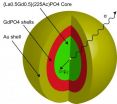(Press-News.org) A new study led by Durham University and BirdLife International, shows that many bird species are likely to suffer under future climate change, and will require enhanced protection of important sites, better management of the wider countryside, and in some of the most extreme cases may need to be physically moved to climatically suitable areas to help them survive.
The priority, the researchers say, is for stronger protection and effective management of networks of important sites for conservation which currently support priority species and could offer new habitat for birds forced to shift their distribution in future.
The research, published in the journal Global Change Biology, examined the potential future distributions of suitable climate within conservation sites (Important Bird Areas) for 370 Asian bird species of conservation concern across the Eastern Himalaya and Lower Mekong regions.
According to the scientists, the findings demonstrate how climate change could affect birdlife and conservation policy across the globe. The researchers say that adapting the way that conservation sites are managed, and facilitating the movement of species to suitable areas, will be critical to future conservation.
Projections show that at least 45% and possibly up to 88% of the 370 species studied will experience declines in suitable climate, leading to changing species composition at individual sites.
The study considered almost 500 scenarios of each bird species' response to future climate change and showed, for the first time, that despite uncertainty in future climate projections, it was extremely likely that these changes in bird communities would occur. However, the site network as a whole is still likely to retain suitable climate for all species in future, meaning that current conservation efforts should be strengthened, but also adapted.
Co-lead author, Dr Robert Bagchi, a Research Fellow at the ETH Zurich (Swiss Federal Institute of Technology), Zurich, who conducted the analysis while at Durham University, said: "It is striking that despite big differences among these scenarios, they agree on the final outcome. Even under the least extreme scenarios of climate change, most species we examined will have to shift their ranges in order to find suitable areas in the future."
The regions studied by the research team include the countries of, Bhutan, Laos, Cambodia and Vietnam, as well as parts of Nepal and India.
Co-lead author, Dr Stephen Willis, School of Biological and Biomedical Sciences, Durham University, said: "As climate changes, we may have to assist birds to move to more suitable locations to help them survive. Although many birds will adjust their distributions, and will find new habitats with suitable climate, we need to manage the countryside to help them disperse, or even relocate birds in the most extreme cases.
"We expect there to be 24 times as many 'losers' as 'winners' in terms of bird species losing or gaining habitat in the future."
The researchers explored climate change impacts on birds in the biodiversity hotspots of the Eastern Himalaya and the Lower Mekong. They then forecasted the likelihood of the IBA (Important Bird Area) network to maintain suitable climate for species of conservation concern.
Co-author, Dr Stuart Butchart, Head of Science at BirdLife International, said: "Overall, while these important sites will continue to sustain bird species of conservation concern, climate change will modify which species each site will be suitable for.
"We therefore need to adapt our conservation management. The good news, however, is that protecting natural habitats benefits people too, helping communities to adapt to climate change. Healthy ecosystems enhance resilience to the adverse impacts of climate change and reduce the vulnerability of people."
The results show that IBAs in the Lower Mekong region were affected more negatively than those in the Eastern Himalaya. Many parts of these regions will experience significant turnover of bird species (the rate of birds newly colonising or becoming locally extinct) over time.
INFORMATION:
The study draws upon the work of thousands of experts and organisations, in particular the Partners that form BirdLife International, who contributed to defining species of conservation concern (through the IUCN Red List), mapping their distributions, and identifying Important Bird Areas. The work was funded by a MacArthur Foundation grant to BirdLife International and Dr Willis at Durham University.
The research was led by Durham University and BirdLife International (including BirdLife International in Indochina) with research partners including Bird Conservation Nepal, Bombay Natural History Society and Conservation International.
Birds may need a hand to weather climate change
2013-02-05
ELSE PRESS RELEASES FROM THIS DATE:
Research suggests meerkat predator-scanning behaviour is altruistic
2013-02-05
VIDEO:
In order to spot potential predators, adult meerkats often climb to a higher vantage point or stand on their hind legs. If a predator is detected, they use several different...
Click here for more information.
In order to spot potential predators, adult meerkats often climb to a higher vantage point or stand on their hind legs. If a predator is detected, they use several different alarm calls to warn the rest of the group. New Cambridge research shows that they are ...
Vitamin C supplements linked to kidney stones
2013-02-05
New research from Karolinska Institutet in Sweden shows that men who take vitamin C supplements regularly run a higher risk of developing kidney stones. The study, which is published in the scientific periodical JAMA Internal Medicine, did not however observe an increased risk between kidney stones and multivitamins – which contain lower concentrations of vitamin C.
The research is based on data from a large population-based study of men from Västmanland and Örebro counties, who were monitored for 11 years. A total of 23,355 men were identified who had no history of ...
Injection-free vaccination technique could address global vaccine challenge for HIV, malaria
2013-02-05
Scientists at King's College London have demonstrated the ability to deliver a dried live vaccine to the skin without a traditional needle, and shown for the first time that this technique is powerful enough to enable specialised immune cells in the skin to kick-start the immunising properties of the vaccine.
Funded by the Bill & Melinda Gates Foundation and published today in Proceedings of the National Academy of Sciences, researchers say although it is an early study this important technical advance offers a potential solution to the challenges of delivering live ...
Chemical reaction keeps stroke-damaged brain from repairing itself
2013-02-05
LA JOLLA, Calif., February 4, 2013 – Nitric oxide, a gaseous molecule produced in the brain, can damage neurons. When the brain produces too much nitric oxide, it contributes to the severity and progression of stroke and neurodegenerative diseases such as Alzheimer's. Researchers at Sanford-Burnham Medical Research Institute recently discovered that nitric oxide not only damages neurons, it also shuts down the brain's repair mechanisms. Their study was published by the Proceedings of the National Academy of Sciences the week of February 4.
"In this study, we've uncovered ...
Biodiversity exploration in the 3-D era
2013-02-05
Taxonomy – the discipline that defines and names groups of organisms – is a field of science that still employs many of the methods used during the beginnings of the discipline in the 18th century. Despite the increasing use of molecular information to delineate new species, the study of the morphology of specimens remains one of the major tasks of taxonomists. These studies often require first-hand examination of the reference specimens (so-called type material) deposited at museum collections around the globe - a time-consuming and laborious task.
To facilitate this ...
New study finds water tubing-related injuries up 250 percent
2013-02-05
Water tubing, a recreational activity in which participants ride an inner tube which is pulled behind a boat by a tow rope, has grown in popularity in recent years. Unfortunately, the number of injuries related to this activity has also increased.
According to a new study by researchers at the Center for Injury Research and Policy of The Research Institute at Nationwide Children's Hospital, the annual number of water tubing-related injuries increased 250 percent over the 19-year study period, rising from 2,068 injuries in 1991 to 7,216 injuries in 2009. Given that more ...
Finding the way to memory
2013-02-05
Our ability to learn and form new memories is fully dependent on the brain's ability to be plastic – that is to change and adapt according to new experiences and environments. A new study from the Montreal Neurological Institute – The Neuro, McGill University, reveals that DCC, the receptor for a crucial protein in the nervous system known as netrin, plays a key role in regulating the plasticity of nerve cell connections in the brain. The absence of DCC leads to the type of memory loss experienced by Dr. Brenda Milner's famous subject HM. Although HM's memory loss resulted ...
February 2013 story tips from Oak Ridge National Laboratory
2013-02-05
HEALTH – Neutron imaging breast cancer . . .
More precise optical imaging is vital for better diagnosis of breast cancer, which strikes one in eight women annually in the United States alone. Researchers at Oak Ridge National Laboratory and the University of Tennessee are using the neutron imaging beam line at ORNL's High Flux Isotope Reactor to evaluate neutron imaging as a powerful new tool for early detection. The study, led by Dr. Maria Cekanova of UT, working with imaging instrument scientist Hassina Bilheux, is using tissue from dogs treated at the UT College of ...
MU scientists build harness for powerful radiation cancer therapy
2013-02-05
VIDEO:
A new discovery might lead to alpha particle therapy for different types of cancer in the near future.
Click here for more information.
COLUMBIA, Mo. ¬— We've all heard that "it's not wise to use a cannon to kill a mosquito." But what if you could focus the cannon's power to concentrate power into a tiny space? In a new study, University of Missouri researchers have demonstrated the ability to harness powerful radioactive particles and direct them toward small cancer ...
Gene variants found to affect human lifespan
2013-02-05
By broadly comparing the DNA of children to that of elderly people, gene researchers have identified gene variants that influence lifespan, either by raising disease risk or by providing protection from disease.
"This research is the first genome-wide, population-based study of copy number variations in children associated with human longevity," said study leader Hakon Hakonarson, M.D., Ph.D., director of the Center for Applied Genomics at The Children's Hospital of Philadelphia.
The study appeared Jan. 30 in the open-access journal PLOS ONE.
Copy number variations ...



